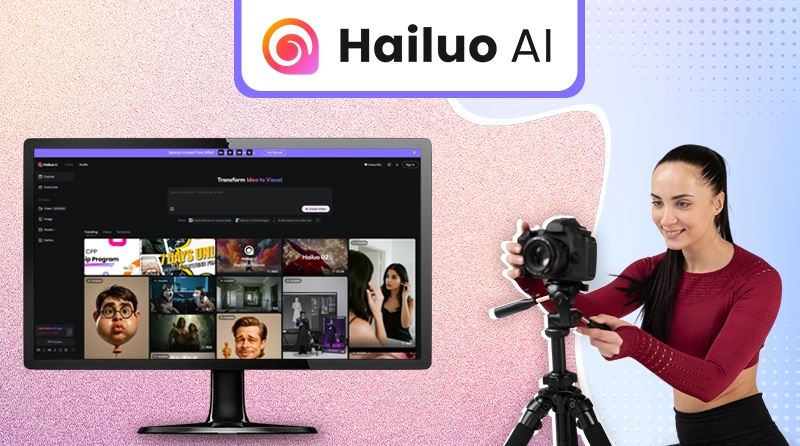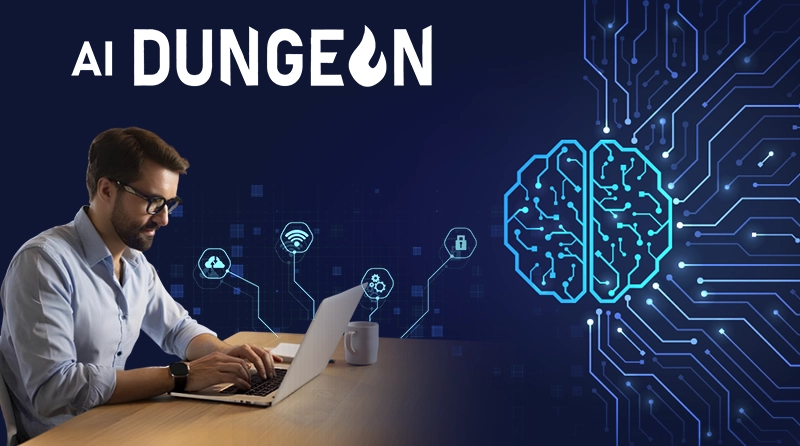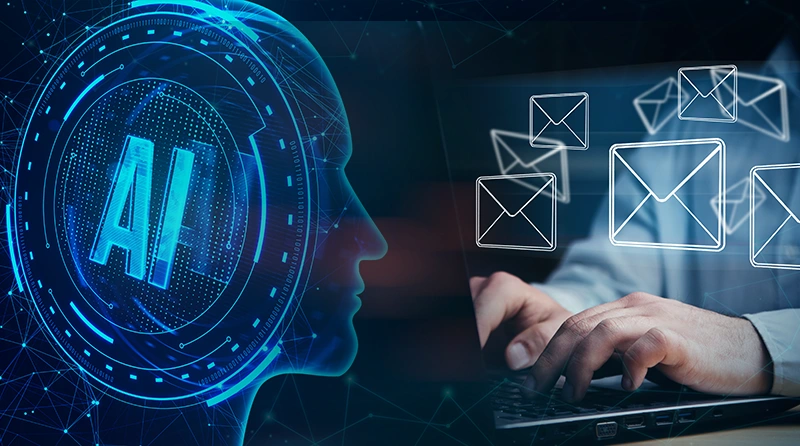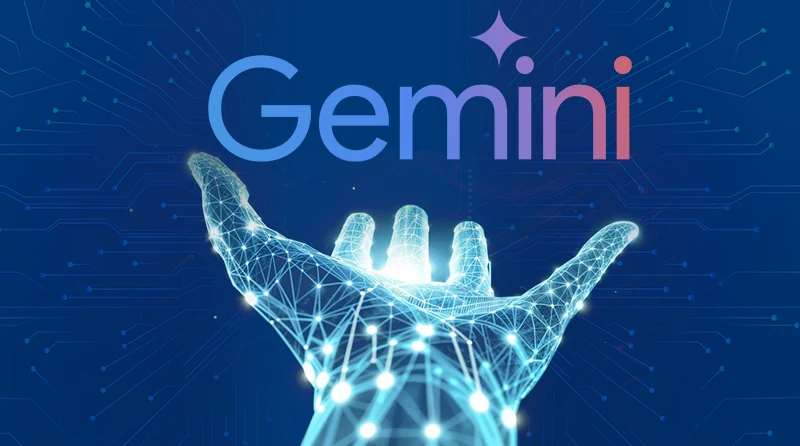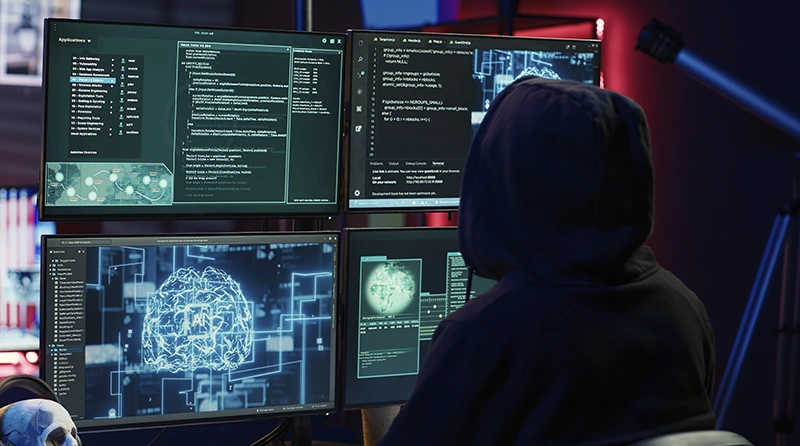The Dark Side of AI: From Deepfakes to Algorithmic Bias – How to Fight the Dangers of AI

What if technology, which was designed to make life easier, had an unintended consequence of blurring the lines between truth from illusions? Artificial Intelligence (AI), now recognized for its advancements, has also darkened the light. From videos with deepfake features that change the mode of reality to algorithms with bias affecting consequential actions, the rapid expansion of AI raises serious ethical, social, and regulatory issues.
According to a Pew Research study performed in 2024, 67% of Americans worry that AI may spread misinformation, and 54% of Americans worry that AI may discriminate, even indirectly. Each day, millions of people view videos, images, and text generated by AI, and automated decision-making processes are made within systems without bias awareness and/or accountability.
Imagine you scroll on your social media page, and you come across a post of an extremely realistic video of a leader repeating controversial statements, and later you find out it was not a real video; it was a deepfake. Alternatively, you apply for a job with an employment system that rejected you ‘silently’ due to biased coding. You are not alone; you might think twice about the job application and not realise that an AI application or service eliminates your previous moment without a second thought.
This blog will detail how deepfakes disrupt truth, how biased algorithms continue to perpetuate structural inequalities, and a few ethical, technical, and regulatory approaches that govern or define how we can ensure that AI operates in the best interests of humanity.
The Rise of Deepfakes: How AI is Manipulating Reality?
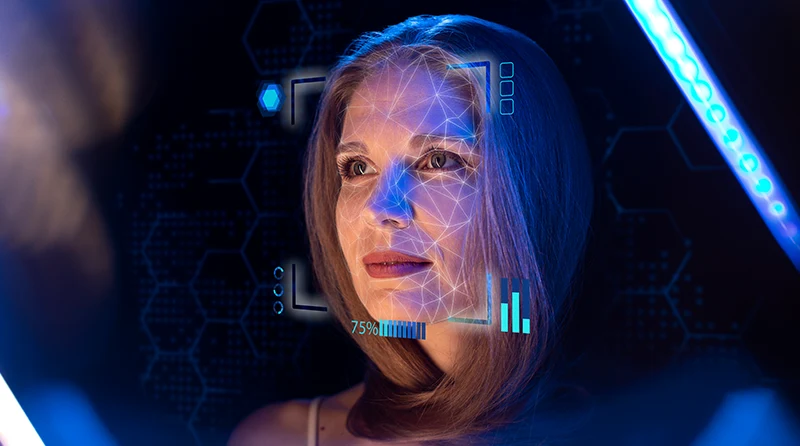
The most iconic example, perhaps of AI’s dark side, is deepfakes. Essentially, deepfakes make use of deep learning and generative adversarial networks (GANs) algorithms to create hyper-realistic images, videos, or voices that are believable, even when they are completely artificial. While this technology was originally developed for creativity, innovation, or to be used in film on set, it became a formidable weapon of misinformation and fake manipulation.
According to a report in 2024 from Deeptrace Labs, the quantity of deepfake videos online doubles every month, and 96% of videos have been manipulated to display a human face. The more alarming concerthats the artificial videos are no longer just in entertainment; they have impacted politics, finance, and media.
The public’s trust may have been harmed in 2023 when a deepfake video appeared on social media that purported to depict President Biden making an unrealistic claim. The delicate balance between what is true and what is fake was further highlighted by the widespread circulation of endorsements featuring celebrities and AI-generated “news anchors.” These examples demonstrate the ease with which AI may erode confidence and influence public opinion.
Pro Tip: Always vet viral videos against multiple credible sources or platforms that have tools like Google’s Deepfake Detection AI and a service called Reality Defender before sharing.
The underlying danger of deepfakes lies not in the spreading of fabricated information but in the loss lost confidence in truth or what was once an obvious truth. When people are no longer able to tell the difference between original and fabricated media, even true evidence begins to lose credibility; this is termed “the liar’s dividend” by experts.
As misinformation is a concern, deepfakes can pose risks to people and their security. People have claimed to have heard fraudsters use AI-generated voices to impersonate a CEO to authorise wire transfers that have caused a company millions. For example, the FBI’s Internet Crime Complaint Centre (IC3) reported a 52% increase in business scams involving voice deepfakes in 2024.
As tools for AI generation become more sophisticated and accessible to more users, addressing the challenge of deepfakes will need to happen in layers, combining attention to public education, AI-detection technologies, and regulations on content in the digital realm.
The Dangers of Algorithmic Bias: Unequal Impacts in Decision-Making
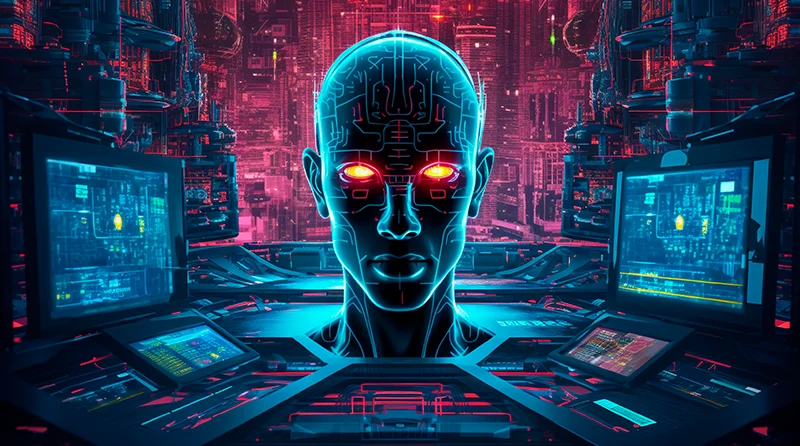
AI systems provide equitable results only in accordance with the dataset they are trained on – and that’s exactly where bias originates. Algorithms naturally incorporate those same biases when trained on a biased, incomplete, or partially populated dataset. This manifests as algorithmic bias, which is an insidious and harmful type of discrimination presented in digital systems that pervades everything from loan applications to hiring decisions.
As reported in 2024 by MIT Technology Review, 43% of large U.S. companies that used an AI tool for hiring found bias was unintentional. A case in point, and arguably a significant example of bias, was when Amazon developed a hiring tool that inadvertently self-trained itself to favour male applicants over female applicants by reviewing historical data.
The biases reach beyond employment. They can determine who gets loans, who gets treated for medical conditions, and even who is flagged for criminal risk. For example, the COMPAS algorithm is used in parts of the judicial system in the United States and found that Black defendants were classified as high-risk almost twice as often as white defendants.
Pro Tip: To lessen bias, make sure to always test AI systems with samples from diverse datasets, and include experts in the field from different demographic groups when developing and training the model.
The real threat of algorithmic bias is not deliberate harm; rather, it is an illusion of objectivity that biased results can be easily and stealthily propagated because consumers have extreme confidence that the findings from AI are fair. Therefore, reducing bias should be at the very least considered to promote fairness, equity and trust in automated systems as AI becomes a regular part of daily life.
How Deepfakes Can Undermine Trust in Media and Public Figures?
Trust serves as the foundation of media and democracy. However, deepfakes are disrupting that foundation at an alarming pace. These AI-generated videos, images, and audio make it possible to create faux speeches, faux interviews, and even faux live events, often with shocking realism, eroding trust in anything we view or hear online.
In 2024, Norton LifeLock disclosed that 72% of Americans struggle with detecting real vs. AI-generated videos. 58% have even viewed at least one deepfake online. With greater confusion comes more misinformation, political disinformation, and distrust of the public.
Besides causing mistrust in politics, imagine waking up to a hot news clip of a labelling war or making inappropriate comments, many believing it with eye-witness testimony, before fact-checkers intervene. This sort of thing has already occurred, with a fake video of the President of Ukraine, Volodymyr Zelenskyy, streaming ‘live’, urging troops to surrender.
It is not just about political leaders; public figures, celebrities, and journalists are the recipients of synthetic media attacks that destroy reputations and tell false narratives. Even when a deepfake is debunked, it may linger in doubt as their previous reputation takes a blow, and public trust is harmed.
Pro Tip: When consuming media online, cross-check with credible news organizations or utilize AI detection tools such as Reality Defender or Deepware Scanner.
The real risk arises when people begin to question everything, including the facts. This phenomenon, which experts refer to as the “post-truth effect,” occurs when viewers completely lose faith in reliable sources, allowing lies to flourish.
Ultimate Guides:
The Ethics of AI: Navigating the Fine Line Between Innovation and Risk
AI is advancing rapidly, resulting in incredible innovations and serious ethical dilemmas. It is introducing positive changes to healthcare, finance, communication, etc. But the same technology can also be used for bad things, such as surveillance, manipulation, and exploitation. The challenge of getting the balance right between innovation and accountability is one of today’s biggest ethical dilemmas.
According to a StanHuman-Centred AI Report (2024), nearly 60% of technology leaders around the world feel AI ethics is behind its rapid growth. The ethical gap can become a perilous situation when powerful AI models are being developed or used with no oversight or moral reasoning.
There are significant issues involving facial recognition systems, which have an incredible global market to enhance security around the world, but just as much global condemnation for infringing on privacy and racial biases. Using predictive policing as a mechanism for efficiency can also perpetuate systemic inequities. Issues around generative AI tools used to create art, music, writing, etc., raise ownership and creative rights in the digital world.
Pro Tip: The right approach to ethical AI starts with transparency. Make clear how the model of AI that you are using makes decisions, including what data it is based on.
Leading organizations like Google, Microsoft, and OpenAI are setting up AI ethics boards and publishing frameworks for responsible AI use. Ethical AI does not seek to stop innovation or new models or technology; it seeks to ensure innovation does not endanger or do harm to society.
Combating Algorithmic Bias: Steps to Create Fairer AI Systems
If algorithmic bias is the problem, fairness is the solution. The design of AI to be fair requires careful design, diverse data, and ongoing diligence.
In a 2024 McKinsey & Company report, it was noted that a biased algorithm may result in a $1.2 trillion reduction in global GDP due to lost productivity and other inequitable impacts.
To Help Eliminate Bias
- Data Transparency: Train AI on diverse and representative data sets.
- Algorithmic Auditing: Routinely run tests on systems being used to monitor for discriminatory outcomes.
- Inclusive Teams: Having diverse teams to design the product enables the identification of potential biases or unethical outcomes.
Insider Tip: Always ask “Who is included in the data, and who is excluded?” Just being mindful of equitable access to the data will help create trust and improve impact in AI design.
It may be impossible to eliminate bias in AI, but it is critical to work towards equity, accountability and improvement in designing fair AI.
The Role of Regulation in Controlling AI’s Negative Impact
As the technology surrounding AI advances, regulation becomes even more important to prevent misuse and manage risk. Without a clear legal framework, advances in areas such as deepfakes, biased algorithms, and AI-powered surveillance could get out of control, leading to privacy, security, and public trust issues.
In the U.S., policymakers have started taking steps tothe ward regulation of AI. The National AI Initiative Act of 2020 created a framework to support AI research, coordination, and ethical principles. Several states, including California, have passed consumer protection laws that address automated decision-making and digital privacy issues. Nevertheless, experts argue that legislation is still very much fragmented and reactive, i.e., AI is evolving to impact society much faster than policymakers are able to legally react.
For example, the European Union’s AI Act is the first comprehensive AI regulation. The Act classifies AI systems according to their anticipated risk levels, creating various levels of compliance designed for risk-classified applications. High-risk applications, including AI used for hiring, law enforcement, or credit scoring, are bound by strict requirements of transparency, no bias, and expectations of human oversight.
As a best practice, businesses should actively adopt best practices in regulatory compliance rather than merely permitting reactive compliance practices. For example, we recommend that any business with employees conduct periodic internal audits on their AI, document AI processes, policies, and people involved, and develop frameworks for accountability as it relates to AI/automated decision-making, etc. This not only ameliorates legal risk but also replaces legal risk with public trust.
Regulation does more than just prevent negative outcomes; it fosters accountability-driven innovation. Knowing the rules of the road enables governments to hold companies accountable for designing and abiding by ethical AI practices, protecting citizen rights, and establishing an even playing field for competition.
Ultimately, having regulatory frameworks is not about putting limits on progress. It is about regulating AI’s ability to meet public values, confirming that technologies which are developed for good are indeed empowering individuals rather than exploiting them. Without regulation, even the most promising developments of AI run the risk of becoming a means of harm rather than a tool for good.
Practical Solutions: How to Detect and Prevent Deepfakes?
Deepfakes are growing rapidly, but there are pragmatic procedures for detecting and preventing them. Awareness, technology, and diligence, when applied together, are the three pillars of protection against misinformation produced by AI.
- Make use of an AI detection tool: There are several well-established detection tools available that are especially made for detecting deepfakes. Microsoft Video Authenticator, Deepware Scanner, and Reality Defender are a few examples of such tools. Before modified content circulates on social media and other platforms, these technologies are made to identify discrepancies in audio or video samples.
- Inspect metadata and origin: Many times, deepfakes will leave a subtle digital trace. Examining the file metadata may show an editing history, while confirming the origin of the audio or video should verify its authenticity.
- Educate the Audience: Social media companies and news organizations are using resources to promote media literacy campaigns that help users identify manipulated media. Research suggests that users who know the content is manipulated are 40% less likely to share deepfakes.
Pro Tip: If you come across a video that looks suspicious, stop, check it against reputable news sources, and see if there is an official statement.
- Improve Authentication Methods: Watermarking and blockchain-based verification systems are quality measures for authentication. Verified digital signatures will provide a way to trace and verify the integrity of media content.
- Support Regulatory Enforcement: Companies should probably put in place specific rules such that if deepfake media is distributed to the general public, the companies will have rules (at either a legal enforcement level or just company policy level) about what constitutes a deepfake and if they know a deepfake exists, an enforcement protocol to delete it.
Deepfakes present an enormous challenge, and raising awareness and educating users and consumers is probably one of the best ways to combat their influence. Combining technology, education, and regulation will help to reduce the impact of deepfakes. Being aware and using the tools available will help individuals and organizations to better protect themselves from manneAI-generated media.
Can AI Be Trusted? The Need for Transparency and Accountability
Imagine your whole life was left to a system to decide all sorts of valuable outcomes, like health data diagnosis, or loan approval, without knowing how it reaches its conclusions. The development of trust in AI requires ethical design, accountability, and transparency.
According to a 2024 survey conducted by Gartner, 62% of organizations across the United States are delaying or unwilling to fully adopt AI technologies because of an inability to discern decision-making practices and the potential ethical implications of biases. Without transparency, organizations not only lose trust but also have difficulty identifying and correcting errors or unintended biases.
Transparency starts with explainable AI (XAI), systems purposely developed to demonstrate how decisions are made with AI. People expect that with XAI, AI can provide evidence or understandable rationales regarding outputs that will allow for an evaluation of fairness and accuracy. For example, a financial institution using AI for improved credit scoring has the capacity to demonstrate to applicants the reasons why their application received a determination of approval or denial or adjust policies for algorithmic bias, allowing for less confusion and possible bias in decision-making.
Tip: Develop auditing frameworks and establish documentation for AI models, datasets, and decision-making processes for legal accountability to intervene when stakeholders or affected parties request it.
Accountability assumes importance as well when stating that a prompt and appropriate human lever of oversight will be needed for AI systems. Particularly in high-stakes contexts — law enforcement, healthcare, and recruitment should all have mechanisms for accountability through organizationally designated responsibility for AI systems’ outcomes as well as a means of redress when there are problems.
Trustworthy AI is not only a technical challenge, but rather a free and social contract, as users expect that when developers prioritize transparency and accountability that they can trust AI judgment without relying on a blind act of human judgment.
In the end, the issue is not whether AI can be trusted for everybody or whether it can be trusted at all, but rather are the AI systems are designed and implemented in such a way that trust would be warranted. There is a way to enable society to utilize the benefits of AI systems prudently while mitigating their harms through combining technical safeguards with ethical governance.
Ultimate Guides:
Educating the Public: How to Protect Yourself from AI Manipulation
When there is a flood of AI-generated content in our lives, public education is the first proactive strategy. We empower citizens to detect manipulation, verify content, and act in informed ways when they understand how their information is produced and how AI-generated media may be biased.
One of the most impactful approaches is digital literacy training. Research from the University of California, Berkeley (2024) demonstrated that people trained to detect deepfakes and biases in AI output performed 45% better in terms of questioning suspicious content compared to individuals who had no training. Basic practices such as referencing multiple sources of information or understanding how well a video or audio clip was pro, along with an understanding of AI capabilities, will significantly reduce an individual’s exposure to misinformation.
Pro Tip: Highly sensational content should trigger an initial sense of scepticism. If the claim or video is outrageous in some way, you should probably pause and cross-check that information over your trusted outlets or fact checkers like Snopes or FactCheck.org.
The other important area to prepare citizens for is public awareness campaigns. We are seeing social media companies and governments work together to create campaigns to inform citizens about the dangers of becoming victims of AI manipulation. For example, platforms such as Meta and TikTok have also developed their own guidelines for their users to encourage either detecting synthetic media or reporting deepfakes that contain potentially harmful content.
There is also substantial benefit for communities through workshops and online resources. Schools and universities, along with civic organizations, are beginning to incorporate AI ethics and media literacy into their curriculum to equip the next generation to work with an AI-filled digital landscape.
In the end, protecting yourself from being manipulated by AI is not rooted in fear, but in empowerment and vigilance. If individuals remain informed, question questionable or suspicious content and utilize the tools available to them, they will be able to carefully navigate and employ AI in their lives while incorporating its advantages without falling into its malevolent side.
Educating the public means that society will not only react to the threats posed by AI, but will also work to cultivate a culture around the use of technology that is responsible in serving humanity.
Conclusion
AI has provided us with unprecedented and prolific innovation; however, AI also has a darker side that we cannot overlook. AI has its dangers, from deep fakes and manipulation of reality to algorithmic biases that reinforce inequity. The dangers of AI are real, and it is relentless. Without safeguards in place, these technologies have the potential to damage trust, perform complex manipulations on our society and reinforce inequities.
Tackling these challenges requires a multi-dimensional approach. Ethical AI development, transparency, and explainable systems, ongoing audits, and anticipatory regulation play a role in reducing risk. Public education and media literacy also enable people to navigate safely and limit the extent of mis and the manipulation of large language model systems.
Both the peers and the creators bear some of the burden. AI developers must carefully design their products to be transparent, accountable, and equitable. Simultaneously, society needs to continue to be watchful, informed, and critical of AI-influenced decisions and content.
Ultimately, this is not the fault of AI itself, but rather the fault of how it is wielded against us for efficiency or at least how we allow it to be wielded. If we use a lens of ethical practice, deploy technology, as well as educate awareness, we can be assured that AI can optimize, not harm. Understanding and addressing the dark side of AI is not optional, but rather a prerequisite for a safe, fair, and equitable digital future.
FAQs
Q1: What are deepfakes?
Deepfakes are artificial intelligence (AI)-generated audio, video, or images that seem authentic but are completely fake.
Q2: How does algorithmic bias affect decisions?
Biased AI systems, which frequently mirror historical injustices, can unjustly affect judgments on hiring, lending, law enforcement, and other areas.
Q3: Can AI be trusted?
Blind trust is dangerous, but AI can be reliable if it is built with accountability, transparency, and ethical protections.
Q4: How can I protect myself from AI manipulation?
Use detection tools, stay informed, check content with trustworthy sources, and hone your digital literacy.







